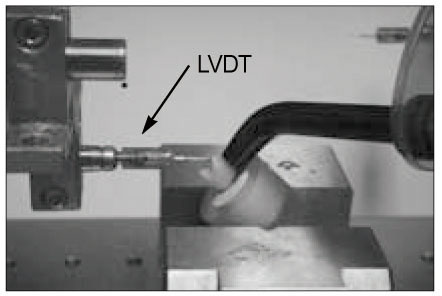References
1. Watts DC, Cash AJ. Determination of polymerization shrinkage kinetics in visible-light-cured materials: methods development. Dent Mater 1991. 7(4)281–287.
2. Lee IB, Cho BH, Son HH, Um CM. A new method to measure the polymerization shrinkage kinetics of light cured composites. J Oral Rehabil 2005. 32(4)304–314.
3. Lee IB, Cho BH, Son HH, Um CM, Lim BS. The effect of consistency, specimen geometry and adhesion on the axial polymerization shrinkage measurement of light cured composites. Dent Mater 2006. 22(11)1071–1079.
4. Davidson CL, de Gee AJ, Feilzer AJ. The competition between the composite-dentin bond strength and the polymerization contraction stress. J Dent Res 1984. 63(12)1396–1399.
5. Neiva IF, de Andrada MA, Baratieri LN, Monteiro S, Ritter AV Jr. An in vitro study of the effect of restorative technique on marginal leakage in posterior composites. Oper Dent 1998. 23(6)282–289.
6. Holan G, Levin M, Bimstein E, Grajower R, Eidelman E. Clinical, radiographic, SEM evaluation and assessment of microleakage of class II composite restorations. Am J Dent 1989. 2(5)274–278.
7. Eick JD, Welch FH. Polymerization shrinkage of posterior composite resins and its possible influence on postoperative sensitivity. Quintessence Int 1986. 17(2)103–111.
8. Opdam NJ, Roeters FJ, Feilzer AJ, Verdonschot EH. Marginal integrity and postoperative sensitivity in Class 2 resin composite restorations in vivo. J Dent 1998. 26(7)555–562.
9. Pearson GJ, Hegarty SM. Cusp movement of molar teeth with composite filling materials in conventional and modified MOD cavities. Br Dent J 1989. 166(5)162–165.
10. Meredith N, Setchell DJ. In vitro measurement of cuspal strain and displacement in composite restored teeth. J Dent 1997. 25(3-4)331–337.
11. Segura A, Donly KJ. In vitro posterior composite polymerization recovery following hygroscopic expansion. J Oral Rehabil 1993. 20(5)495–499.
12. Rees JS, Jagger DC, Williams DR, Brown G, Duguid W. A reappraisal of the incremental packing technique for light cured composite resins. J Oral Rehabil 2004. 31(1)81–84.
13. Abbas G, Fleming GJ, Harrington E, Shortall AC, Burke FJ. Cuspal movement and microleakage in premolar teeth restored with a packable composite cured in bulk or in increments. J Dent 2003. 31(6)437–444.
14. Fleming GJ, Hall DP, Shortall AC, Burke FJ. Cuspal movement and microleakage in premolar teeth restored with posterior filling materials of varying reported volumetric shrinkage values. J Dent 2005. 33(2)139–146.
15. Lee MR, Cho BH, Son HH, Um CM, Lee IB. Influence of cavity dimension and restoration methods on the cusp deflection of premolars in composite restoration. Dent Mater 2007. 23(3)288–295.
16. McCullock AJ, Smith BG. In vitro studies of cuspal movement produced by adhesive restorative materials. Br Dent J 1986. 161(11)405–409.
17. Versluis A, Douglas WH, Cross M, Sakaguchi RL. Does an incremental filling technique reduce polymerization shrinkage stresses? J Dent Res 1996. 75(3)871–878.
18. Feilzer AJ, Dooren LH, de Gee AJ, Davidson CL. Influence of light intensity on polymerization shrinkage and integrity of restoration-cavity interface. Eur J Oral Sci 1995. 103(5)322–326.
19. Uno S, Asmussen E. Marginal adaptation of a restorative resin polymerized at reduced rate. Scand J Dent Res 1991. 99(5)440–444.
20. Alomari QD, Reinhardt JW, Boyer DB. Effect of liners on cusp deflection and gap formation in composite restorations. Oper Dent 2001. 26(4)406–411.
21. Davidson CL, deGee AJ. Relaxation of polymerization contraction stresses by flow in dental composites. J Dent Res 1984. 63(2)146–148.
22. Brännström M. Communication between the oral cavity and the dental pulp associated with restorative treatment. Oper Dent 1984. 9(2)57–68.
23. Brännström M, Johnson G, Linden LA. Fluid flow and pain response in the dentin produced by hydrostatic pressure. Odontol Revy 1969. 20(1)15–30.







